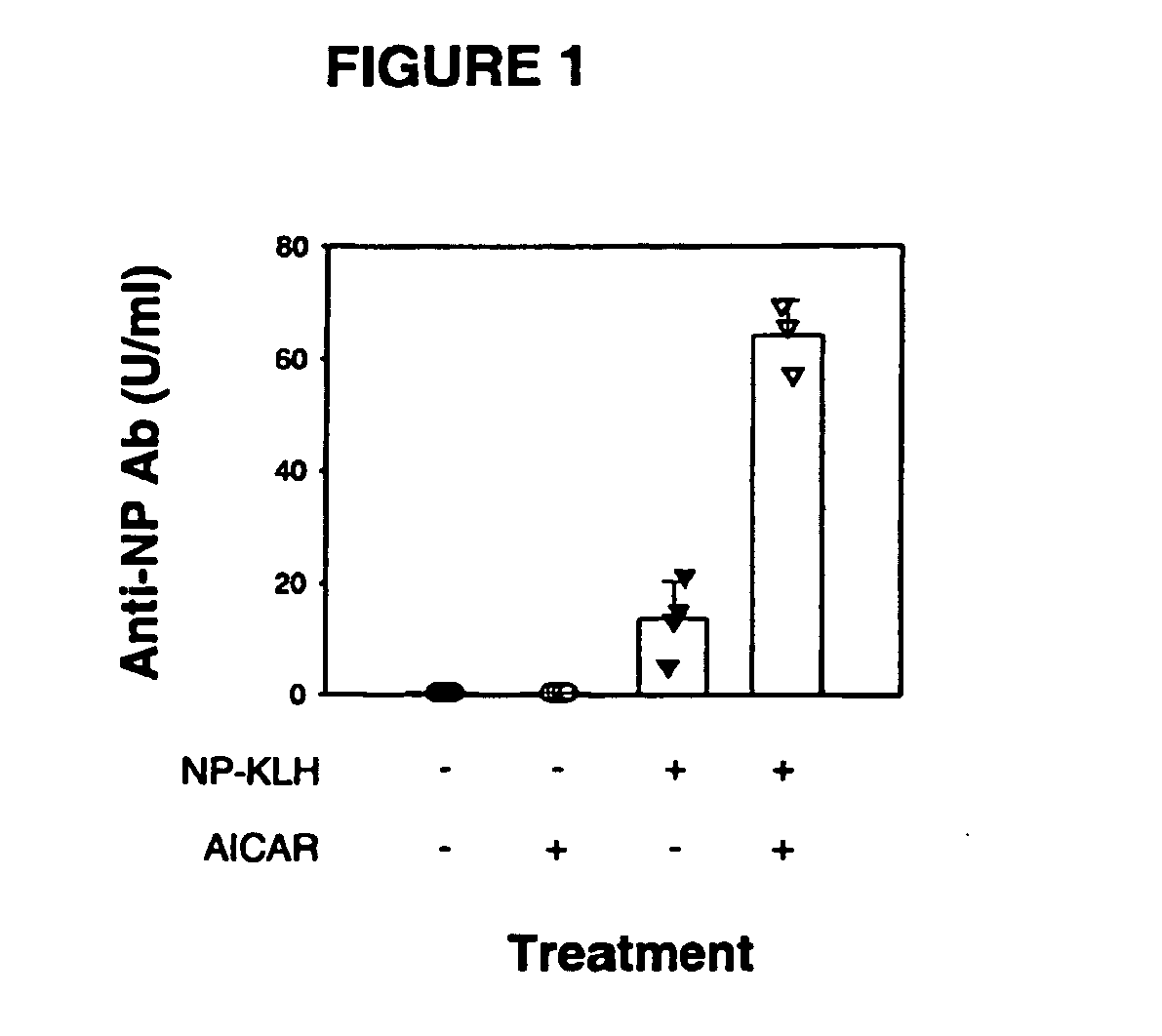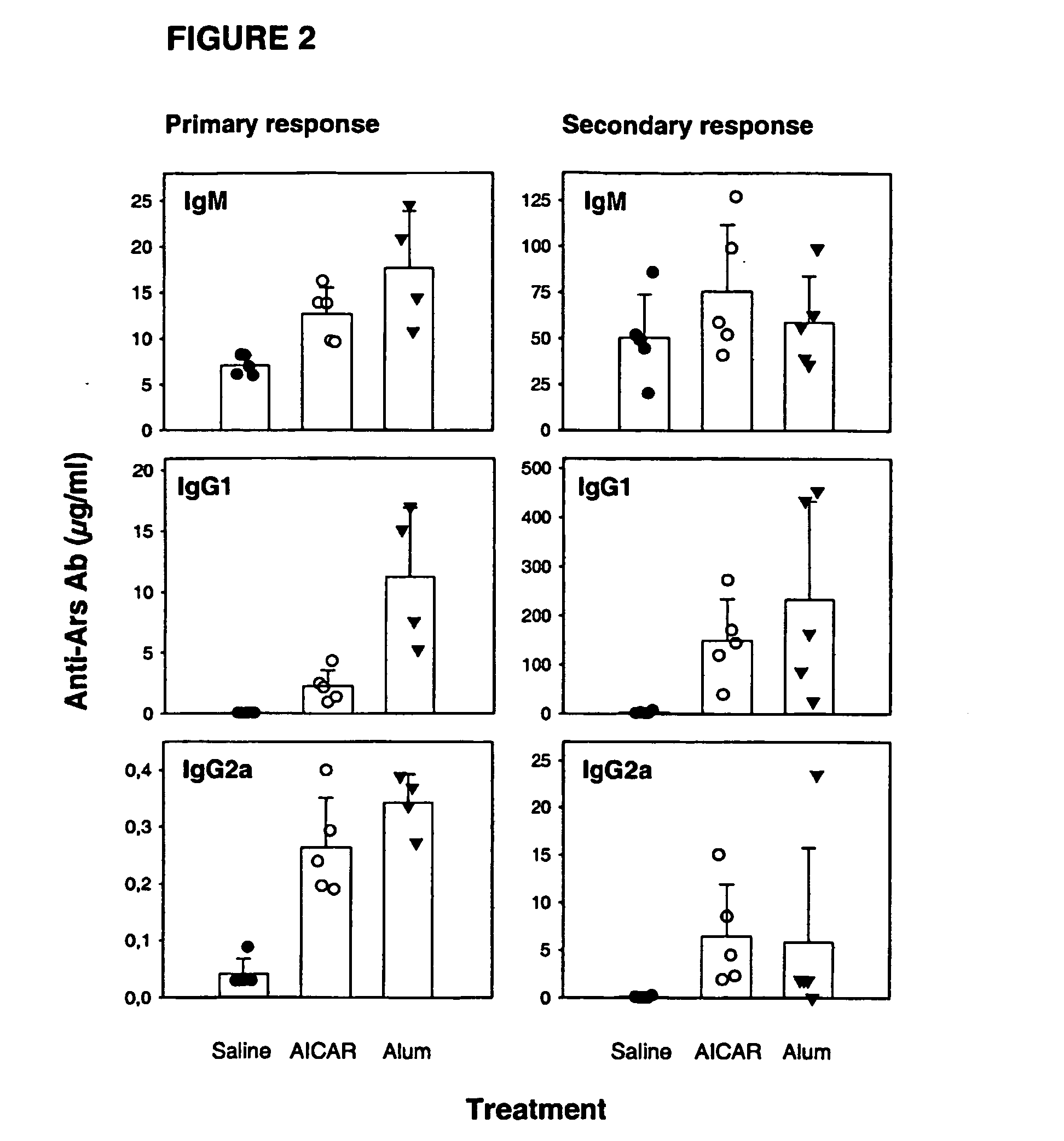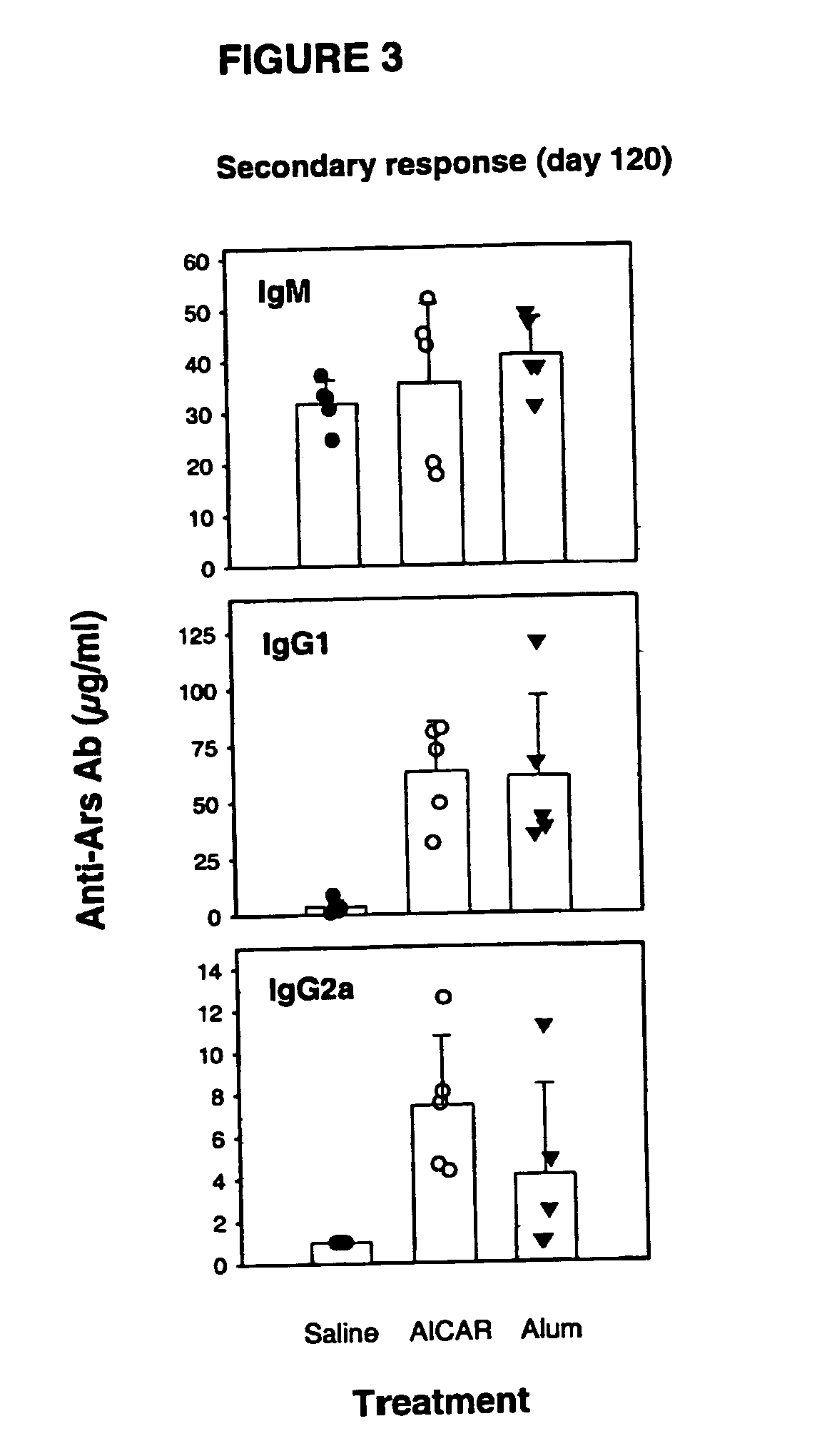Amp-kinase agonists or adenosine pro-drugs as immuno-stimulating agents
a technology of adenosine prodrug and akinase agonist, which is applied in the field of immunostimulating agent, can solve the problems of limited use, tissue necrosis, pain and/or discomfort, and most have proved too toxic for routine clinical use, so as to reduce the anti-inflammatory effect of a vaccine and enhance the immune response
- Summary
- Abstract
- Description
- Claims
- Application Information
AI Technical Summary
Benefits of technology
Problems solved by technology
Method used
Image
Examples
example 1
[0071] Immuno-stimulatory properties of AICA-riboside when co-administered with an antigen: the hapten-protein conjugate nitrophenylacetyl-keyhole limpet hemocyanin (NP-KLH).
[0072] BALB / c mice were injected intraperitoneally with 200 μl of saline, aqueous solution (phosphate buffer solution), or with 200 μl of phosphate buffer solution containing AICA-riboside (10 mg), NP-KLH (100 μg) or NP-KLH (100 μg)+AICA-riboside (10 mg). Height days after immunization, mice were bled and serum levels of antigen (NP)-specific antibodies were determined by ELISA according to standard procedure using isotype-specific reagents. As illustrated FIG. 1, this experiment demonstrates that co-administration of AICA-riboside with an antigen causes an increased antigen-specific antibody response when compared to antigen-administration alone. Moreover, the experiment demonstrates that administration of AICA-riboside alone does not lead to an increased, antigen-specific antibody response.
example 2
[0073] Effect of AICA-riboside as an adjuvant on the primary and secondary antibody: responses, when co-administered with the hapten conjugate p-azophenylarsonat-keyhole limpet hemocyanin (Ars-KLH).
[0074] Three groups of BALB / c mice received an intraperitoneal injection of Ars-KLH (100 μg), Ars-KLH (100 μg)+AICA-riboside (10 mg) or Ars-KLH (100 μg)+Alum (50 μl). 21 days after immunization, mice were bled and serum levels of antigen (Ars)-specific antibodies were determined by ELISA as previously described (primary response). On day 22, all mice received a second injection (boost) of Ars-KLH (100 μg) i.p. Mice were bled 8 days after the antigen boost and serum levels of Ars-specific antibodies were determined by ELISA (secondary response). The results are illustrated in FIG. 2.
[0075] This experiment demonstrates that co-administration of AICA-riboside with an antigen leads to increased levels of antigen-specific IgG antibodies when compared to control mice immunized with antigen in...
example 3
[0076] Long-lasting effect of AICA-riboside as an adjuvant.
[0077] Mice immunized according to the protocol described in example 2 were bled 120 days after the first encounter with the antigen (in the presence or absence of adjuvant) and serum levels of antigen specific antibodies were determined by ELISA as described previously (secondary response, day 120).
[0078] This experiment demonstrates that co-administration of AICA-riboside with an antigen leads to a long-lasting increase in antigen-specific response when compared to animals injected with antigen alone (FIG. 3).
PUM
| Property | Measurement | Unit |
|---|---|---|
| Immunogenicity | aaaaa | aaaaa |
Abstract
Description
Claims
Application Information
 Login to View More
Login to View More - R&D
- Intellectual Property
- Life Sciences
- Materials
- Tech Scout
- Unparalleled Data Quality
- Higher Quality Content
- 60% Fewer Hallucinations
Browse by: Latest US Patents, China's latest patents, Technical Efficacy Thesaurus, Application Domain, Technology Topic, Popular Technical Reports.
© 2025 PatSnap. All rights reserved.Legal|Privacy policy|Modern Slavery Act Transparency Statement|Sitemap|About US| Contact US: help@patsnap.com



